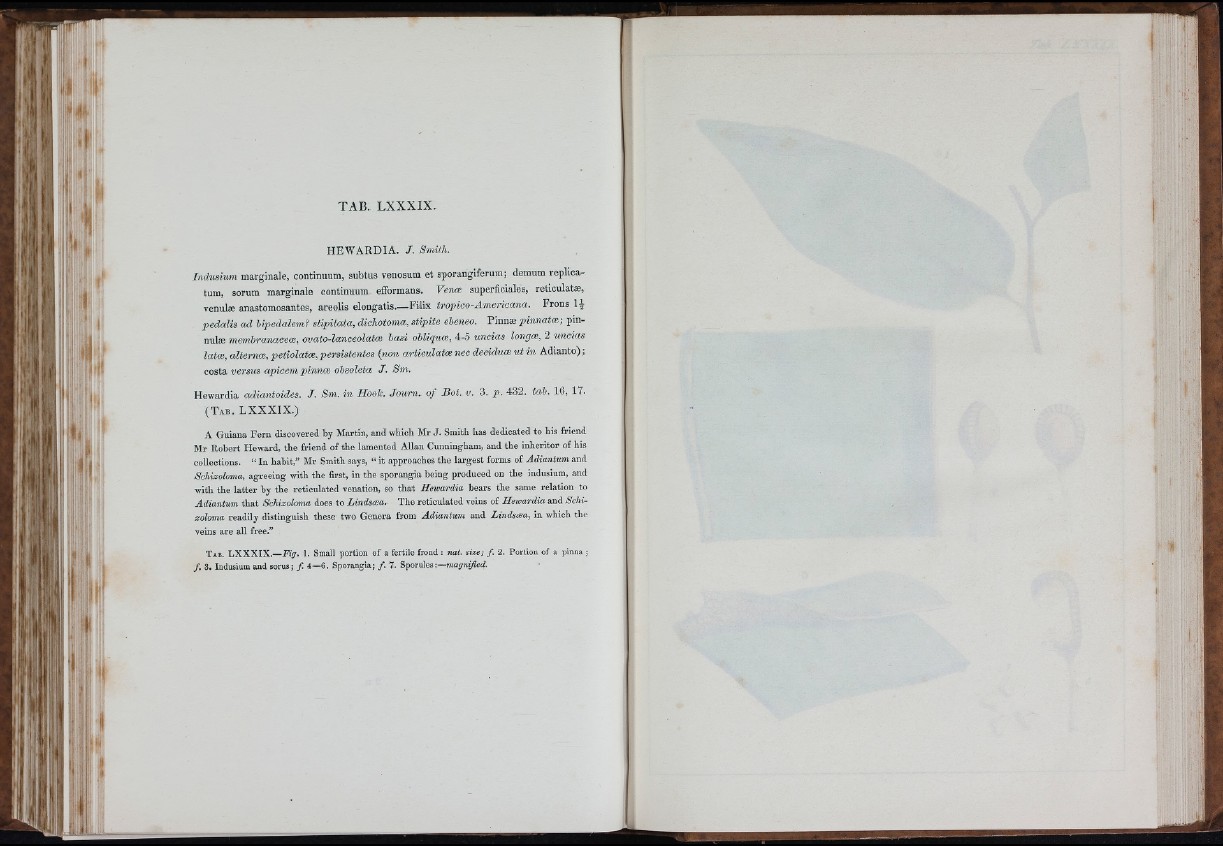
'f ,ll,í
•li ! TAB. LX XX IX .
H EW A R D IA . J . Sm ith .
In d u s ium marginale, continuum, subtus venosum e t sporangiferum; demum replica-
tum, sorum marginale continuum efformans. Venæ superficiales, reticulatæ,
venulæ anastomosantes, areolis elongatis.— Filix tro pico-Am e ricana. Frons 1J
p e d a lis a d Upedalem? stip ita ta , d ichotoma, stipite ebeneo. Pinnæ p in n a tæ ; pinnulæ
membranaceæ, ovato-lanceolatæ basi obliquoe, 4-5 uncías longoe, 2 uncias
latæ, a ltem m , p e tiolatoe , persistentes (non ar ticu la toe nec d eciduæ u t in Adianto) ;
costa versus apicem p in næ obsoleta J . Sm .
Hewardia adiantoides. J . Sm . in Hook. Jo u rn . o f B o t. v. 3. p . 432. tab. 16, 17.
( T a b . L X X X IX . )
A Guiana Fern discovered by Martin, and which Mr J . Smith has dedicated to his friend
Mr Robert Heward, the friend of the lamented Allan Cunningham, and the inheritor of his
collections. “ In habit,” Mr Smith says, “ it approaches the largest forms of Adiantum and
Schizoloma, agreeing with the first, in the sporangia being produced on the indusium, and
with the latter by the reticulated venation, so that Hewardia bears the same relation to
Adiantum that Schizoloma does to Lindsæa. The reticulated veins of Hewardia and Schizoloma
readily distinguish these two Genera from Adiantum and Lindsæa, in which tlie
veins are all free.”
T a b . L X X X IX .—F ig . 1. Small portion o f a fertile frond : nat. size : f . 2. Porlion o f a pinna ;
/ . 3. Indusium and sorus; f . 4—6. Sporangia; / . 7. magnified.
B T T T